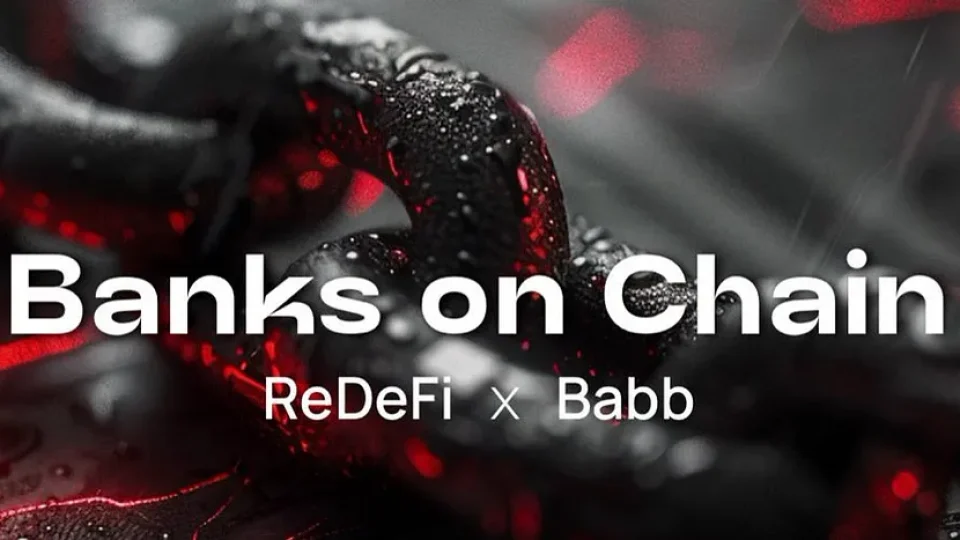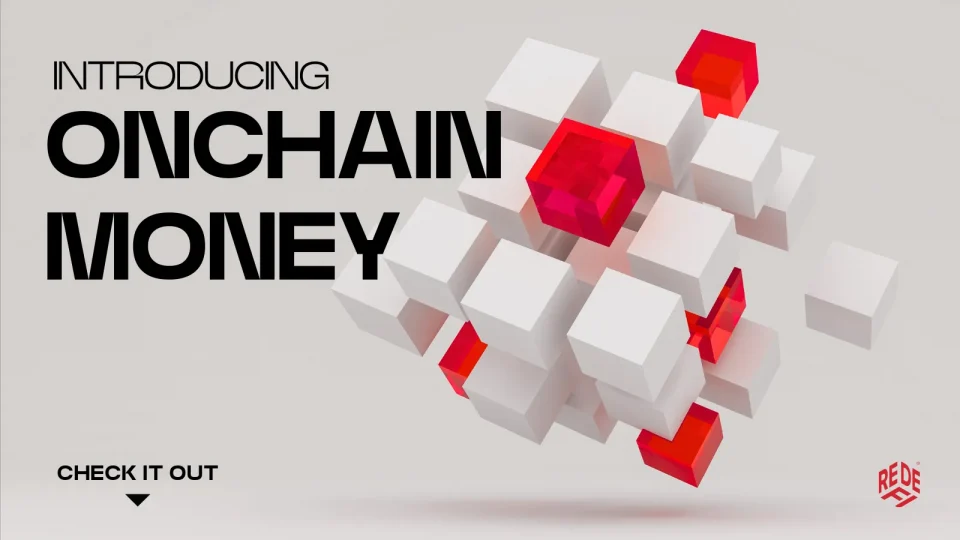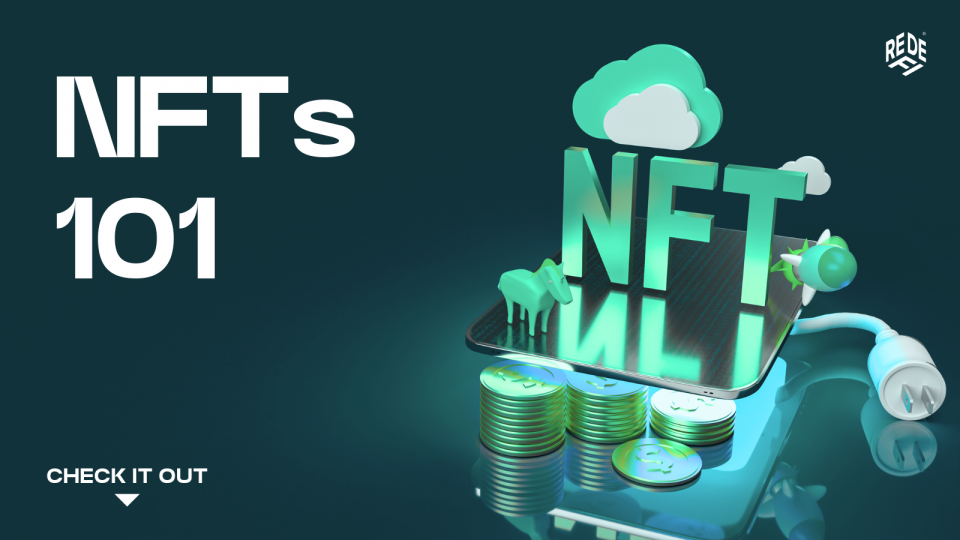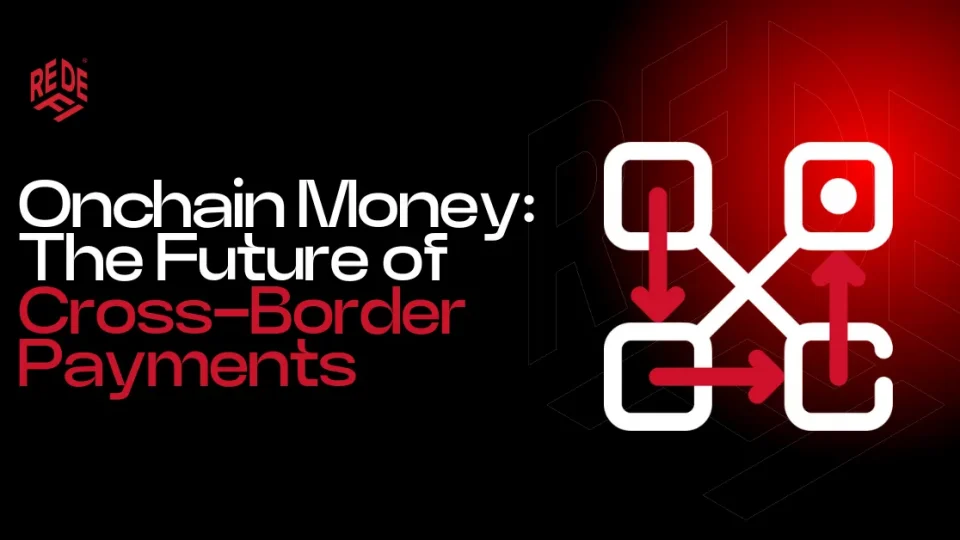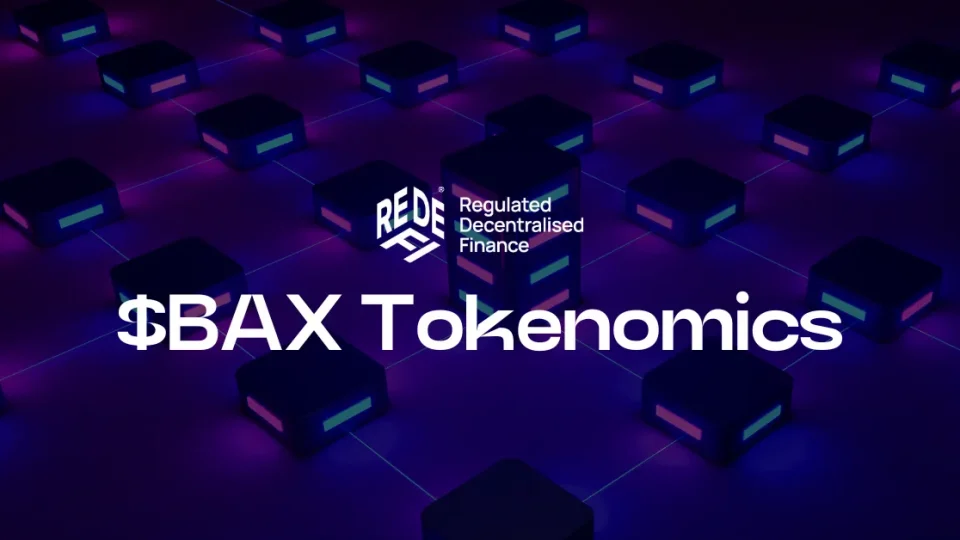The Only Guide You Will Ever Need
Letter A
Address: A unique sequence of numbers and letters used to receive, store, or send cryptocurrency. It’s similar to a bank account number.
Altcoin: Any cryptocurrency other than Bitcoin. Derived from “alternative” and “coin,” it represents various blockchain projects and tokens.
ASIC (Application Specific Integrated Circuit): Specialised hardware designed primarily to mine certain cryptocurrencies offers faster processing speed than general-purpose computers.
Attack (51%): A potential attack on a blockchain, where a single user or group controls more than 50% of the network’s mining/voting power. This control can disrupt the network, double-spending coins or preventing others from completing blocks.
Atomic Swap: It is an automated, self-enforcing exchange contract for trading cryptocurrencies P2P, without the need for a trusted intermediary.
Airdrop: A method by which cryptocurrency enterprises distribute tokens or coins to the wallets of some users free of charge, often as part of a marketing strategy.
API (Application Programming Interface): A set of rules and tools for building software and applications. In crypto, exchanges often provide API access for automated trading.
Arbitrage: The act of buying and selling on different exchanges to take advantage of differing prices for the same asset.
Audit: A thorough analysis of blockchain code, particularly smart contracts, to ensure they function as intended and are free from vulnerabilities.
Authentication: A process to verify the identity of a user or system. In crypto, this often refers to multi-factor methods to secure accounts.
Letter B
Block: The fundamental unit of a blockchain. It contains a batch of validated transactions, the timestamp of when they were added, and a reference to the previous block. All blocks linked together form the blockchain.
Bounty: Incentive-based rewards offered to individuals for performing specific tasks related to a crypto project. These can range from finding software bugs to marketing activities.
Bull Market: A market characterised by rising asset prices. In a bull market, investors are optimistic and expect future prices to be higher than current ones.
Byzantine Fault Tolerance (BFT): A consensus mechanism in distributed systems, ensuring they operate reliably, even when some nodes fail or act maliciously. BFT is crucial for blockchain’s security, ensuring transactions are properly validated.
Burn: The process of permanently removing coins or tokens from circulation. This can decrease the total supply, potentially increasing scarcity.
Brain Wallet: A method of creating a cryptocurrency wallet by using a memorised passphrase. While it’s a form of cold storage, it’s risky because if the passphrase is forgotten or stolen, the funds are lost.
Broadcast: The act of disseminating transaction data to all nodes in a network. Once broadcasted, nodes work to validate the transaction and add it to the next block in the blockchain.
Letter C
Centralised Exchange (CEX): A type of crypto exchange operated by a company or an entity, that acts as an intermediary between buyers and sellers.
Circuit Breakers: Mechanisms used by some trading platforms to halt trading after extreme price movements. They are designed to give traders time to make informed decisions during periods of high volatility.
Coin: Represents a cryptocurrency that has its standalone blockchain (e.g., Bitcoin, Ethereum). Contrasts with tokens, which are hosted on another coin’s blockchain.
Cold Storage: A method of storing cryptocurrency offline to protect it from theft or hacks. This could be in the form of paper wallets, hardware wallets, or air-gapped (disconnected) computers.
Confirmation: After a transaction is broadcasted to the network, it is verified by nodes and then added to a block. Each time a subsequent block is added, the transaction gets another confirmation, increasing its security.
Consensus: A mechanism used to achieve agreement on a single data value within a blockchain. Popular consensus mechanisms include Proof of Work (PoW) and Proof of Stake (PoS).
Cryptojacking: A malicious activity where attackers use someone else’s computer resources to mine crypto without the owner’s knowledge or consent.
Cryptography: The study and application of techniques to communicate securely and prevent third-party adversaries from reading private messages. It’s foundational to the creation and management of cryptocurrencies.
Letter D
Decentralisation: A key principle of most cryptocurrencies, where no single entity or authority has control over the entire network.
Decentralised Applications (dApps): Applications that run on a peer-to-peer network of computers rather than a single computer. These are often built on blockchain platforms, like Ethereum.
Decentralised Exchange (DEX): A type of cryptocurrency exchange that operates without a central authority, enabling peer-to-peer trading directly between users.
Decentralised Finance (DeFi): A subset of a new financial system that acts like the traditional one, but with automated solutions using cryptocurrencies and smart contracts.
Deflation: An economic term that indicates a decrease in the price level of goods and services, often accompanied by an increase in the value of money.
Derivatives: Financial contracts that derive their value from an underlying asset. In crypto, these can be futures, options, or swaps representing cryptocurrencies.
Digital Signature: A cryptographic tool that lets a person prove their identity or approve transactions. It’s essential for verifying the authenticity of a message or a document in a blockchain network.
Distributed Ledger: A database that’s spread across several nodes or computing devices. Each node maintains a copy of the ledger to provide a true and validated record of each transaction.
Double Spend: A potential flaw in systems where the same single digital token can be spent more than once. This problem is solved through various consensus mechanisms.
Dust: Refers to a very small amount of cryptocurrency that’s left in a user’s wallet, usually too small to spend or withdraw.
Letter E
Ecosystem: The interconnected and interdependent suite of services, platforms, tools, and products built around a particular cryptocurrency or blockchain.
Elliptic Curve Cryptography (ECC): A method used to create public key cryptography, essential for ensuring the security of transactions on many blockchains.
ERC-20: A technical standard used for smart contracts on the Ethereum blockchain for implementing tokens.
ERC-721: A standard primarily used for creating non-fungible tokens (NFTs), where each token is unique and not interchangeable on a 1:1 basis.
ERC-1155: A multi-token standard that allows for both fungible and non-fungible tokens within a single contract. It offers more efficiency and flexibility compared to an ERC-20 or ERC-721.
ERC-777: A newer Ethereum token standard that seeks to address vulnerabilities in the ERC-20 standard and adds features, including more advanced transfer functions.
ERC-223: An Ethereum token standard that addresses some of the issues in ERC-20, primarily the problem where tokens are lost when sent mistakenly to a contract address.
Escrow: A contractual arrangement where a third party receives and disburses funds or assets for primary transacting parties, with the disbursement dependent on agreed-upon conditions being met.
Extrinsic Value: The difference between the current price of an option and its intrinsic value, often related to its time value or implied volatility.
Encryption: The process of converting plain text or data into a coded form, preventing unauthorised access. It is essential to ensure data integrity and confidentiality.
Letter F
Faucet: Originating from the idea of dripping free coins, a faucet is a website or application that offers small amounts of cryptocurrency to users. Typically used for promotional purposes, or testnet environments, so users can interact with the network.
Fiat: Refers to our traditional currencies, like the pound or dollar, issued by governments. Unlike cryptocurrencies, they’re centralised and often subject to central banking policies.
Fork: A fork signifies a significant change, split, or branch in a blockchain. Forks can either be soft (temporary and compatible with older versions) or hard (permanent, creating a distinct version from the original blockchain).
Fungible: Describes an asset where individual units are interchangeable. For instance, one Bitcoin is always equal to another Bitcoin. This contrasts with non-fungible assets, where each unit is unique.
Futures Contract: A financial contract obligating the buyer to purchase, or the seller to sell, a specific crypto, at a predetermined future date and price. These contracts are standardised and traded on futures exchanges.
Full Node: A computer on a blockchain network, upholding the entire copy of all transaction records. Full nodes validate transactions and blocks on the network, ensuring data integrity and consistency.
Fundamental Analysis (FA): A method used to evaluate the intrinsic value of a cryptocurrency by analysing various factors like technology, team, market demand, and more.
Letter G
Gas: A term primarily associated with the Ethereum network, it represents the fee required to successfully conduct a transaction or execute a contract. Gas is used so the smart contracts can initiate the transaction.
Gas Limit: The maximum amount of units of gas one is willing to spend on a transaction. It ensures you don’t spend more than intended.
Gas Price: The amount of Ether one is willing to pay for every unit of gas when conducting an Ethereum transaction. It’s usually measured in Gwei.
Genesis Block: The very first block in any blockchain-based protocol. The first one for Bitcoin was mined by Satoshi Nakamoto, on Jan. 3rd, 2009.
Governance: In the context of blockchain and cryptocurrency, governance refers to the mechanisms and processes by which decisions are made within a blockchain ecosystem. This often involves token holders voting on proposals or changes to the protocol. Effective governance ensures a system’s adaptability, fairness, and sustainability.
Graphene: A set of technologies aiming to increase the efficiency of block propagation and reduce the resources required for Bitcoin nodes.
Gwei: It is a unit of measurement. For example, a denomination of Ether (ETH), is used when discussing gas prices. One Ether is equivalent to one billion Gwei.
Letter H
Halving: Every four years, miners’ reward for validating transactions and adding them to the Bitcoin blockchain is halved. This process reduces the rate at which new coins enter circulation.
Hash: A function converting input data (like a transaction) into a fixed-size string of characters, typically a mix of numbers and letters. In crypto, hashes secure and confirm transactions on the blockchain.
Hash Rate: The speed at which a computer can complete an operation in a crypto protocol. For miners, a higher hash rate means a better chance of mining the next block on a blockchain.
Hierarchical Deterministic (HD) Wallet: A wallet type generating a hierarchical structure of private/public addresses. This design lets users have a new address for each transaction, boosting privacy.
Letter I
ICO (Initial Coin Offering): A fundraising method where new cryptocurrency projects sell their tokens, usually in exchange for Ethereum, stablecoins or other altcoins. It’s similar to an initial public offering (IPO) but for crypto.
IDO (Initial DEX Offering): A fundraising event that takes place on a DEX, rather than a traditional platform. It provides a direct and open way for projects to raise capital and for investors to access new tokens before they are available on larger exchanges. It’s seen as a more democratic way to launch new tokens, giving participants immediate liquidity.
Immutable: Once data is written onto the blockchain, it cannot be changed, making it immutable. This characteristic ensures transaction integrity and security in distributed ledger systems.
Inflation: The rate at which the supply of a cryptocurrency increases over time. Some cryptocurrencies have a fixed supply, while others, like fiat currencies or some staking tokens, inflate over time.
Interoperability: Refers to the ability of different blockchain systems to work together and share information seamlessly. It’s a goal for many projects to ensure broader adoption and functionality.
Isolated Margin: This term is used in trading, this is a type of margin mode that allows traders to limit their risk to a particular trading pair, instead of pooling their margin balance across multiple trades.
Letter J
JSON-RPC: A remote procedure call (RPC) protocol encoded in JSON. It’s a lightweight data-interchange format that’s easy for humans to read and write. In the context of cryptocurrency, it’s commonly used for communication between apps and Ethereum nodes.
Jubjub: A type of elliptic curve used in cryptographic protocols, especially within the Zcash privacy coin framework. It enhances the security and efficiency of certain cryptographic operations.
Letter K
KYC (Know Your Customer): A verification process where users provide personal information to exchanges or other services. It’s an essential regulatory requirement to prevent fraud, money laundering, and financing of terrorism.
Keccak: A cryptographic hash function that’s the basis for SHA-3. Used in several projects to ensure data integrity and security.
Key (Private and Public): In cryptography, a user has a pair of cryptographic keys: a public key, which is openly shared, and a private key, kept secret. The public key is used to receive funds, while the private key allows spending/sending.
Key Derivation Function (KDF): A cryptographic process that derives one or more secret keys from a secret value, such as a master key or passphrase. It’s used in various encryption applications.
Letter L
Layer 1: Refers to the main blockchain in a network. Bitcoin and Ethereum a layer 1, which forms the foundational protocol.
Layer 2: A secondary framework or protocol built atop the main blockchain (Layer 1) For example Arbitrum is a layer 2 blockchain, while Ethereum is its layer 1. It aims to solve scalability issues and increase transaction speeds.
Ledger: A record-keeping system that chronologically lists all transactions made in a cryptocurrency. It’s decentralised and immutable, ensuring transparency and security.
Liquidity: Refers to how easily a user can convert or sell an asset, without affecting its price. High liquidity means an asset can be easily converted to fiat or equivalent whereas low liquidity means the opposite.
Liquidity Pool: A shared fund where users deposit different tokens to enable trading on decentralised exchanges. These pools provide the necessary funds so users can trade without needing a direct buyer or seller for their tokens. In return, depositors often earn trading fees or rewards.
Letter M
Mainnet: The primary network of a blockchain project, where transactions are recorded and validated. It’s distinct from a testnet, which is used for testing and development purposes.
Mempool: A set of unconfirmed transactions in a blockchain. These transactions wait in the mempool until they can be included in a new block by miners. The mempool’s size and transaction wait times can vary based on network activity.
Mining: In crypto, mining refers to the computational process by which transactions are verified and added to a blockchain’s public ledger. Miners use powerful computers to solve complex mathematical problems. Upon successfully solving a problem, they’re rewarded with the underlying token of the blockchain.
Multisig: A digital signature process which requires multiple private keys to authorise a transaction. It enhances security by necessitating more than one keyholder’s approval, commonly used in collaborative financial setups or to provide an additional layer of protection against unauthorised transactions.
Letter N
Node: An integral part of a cryptocurrency’s infrastructure. A node is a computer connected to the cryptocurrency network that verifies transactions and relays information. There are different types of nodes, such as full nodes, which store the entire blockchain, and lightweight nodes, which store only part of the blockchain.
Nonce: A unique number used only once in cryptographic communication. In the context of blockchain mining, it’s the value that miners adjust to find a block hash that meets the network’s difficulty target.
Non-fungible Token (NFT): Digital tokens representing ownership of a unique item or piece of content on the blockchain. Unlike cryptocurrencies which are fungible and can be exchanged on a one-for-one basis, each NFT is distinct and cannot be exchanged on a like-for-like basis.
Letter O
Off-chain: Denotes any transaction or activity that doesn’t take place on the blockchain, but outside of it. While these actions may still relate to the blockchain, they aren’t recorded on it and therefore aren’t subject to the same level of transparency and security. Examples include side-chain activities, payment channels, or contractual agreements made off the network that might be settled on-chain later.
On-chain: Refers to all operations, events, and transactions that are recorded directly on the blockchain. Such activities are permanently stored on the network, validated by participants, and visible to anyone inspecting the blockchain. Examples include transfers, smart contract executions, data recording or even governance voting.
Open-Source: In the context of software, it means the source code of a protocol is freely available. This allows anyone to view, and distribute it. Many protocols opt for this code for transparency purposes.
Oracles: These are external data feeds supplying information to smart contracts. As blockchains can’t access off-chain data on their own, oracles act as a bridge, enabling smart contracts to interact with real-world data and events.
Letter P
Paper Wallet: A physical document containing all the data needed to generate a crypto wallet’s private keys. This offers an offline way of storing crypto but can be vulnerable if the document is lost or damaged.
Peer-to-Peer (P2P): Direct interactions between two parties in a decentralised network, without the need for an intermediary. In crypto, P2P often refers to direct transfers or trades of crypto coins/tokens between individuals.
Proof of Stake (PoS): A consensus mechanism where validators confirm each transaction on a blockchain and create new blocks based on the number of coins they hold/are willing to stake as collateral.
Proof of Work (PoW): A consensus mechanism requiring miners to solve complex mathematical equations to validate transactions and create new blocks. It’s energy-intensive and underpins networks like Bitcoin.
Public Address: It is essentially the cryptographic hash of a public key, which allows users to share and receive cryptocurrencies.
Letter Q
Quorum: The minimum number of members required to validate a transaction or take an action. Usually, it’s been referred to governance decisions in DAOs when a proposal is up for voting, ensuring decisions reflect the consensus.
QR Code: In crypto, QR codes often represent wallet addresses, making transactions easier and reducing the risk of errors.
Letter R
Runtime: In the context of blockchain and smart contracts, runtime refers to the execution environment in which the contract code operates. It’s where the logic of smart contracts is processed and validated during transactions on the blockchain.
Letter S
Satoshi: A Satoshi is the smallest divisible unit of a Bitcoin. It represents one one-hundred-millionth of a single Bitcoin or 0.00000001 BTC. This granularity allows for micro-transactions on the network, making it versatile for various uses.
Scalability: It refers to the ability of a system to handle a growing number of transactions. Solutions include increasing block size, layer 2 solutions, or entirely new consensus mechanisms.
SegWit (Segregated Witness): Introduced as a solution to Bitcoin’s scalability concerns, SegWit is a protocol upgrade that changes the way data is stored. Segregating transactional data from signature data, effectively increases the block size, allowing for more transactions per block. It was a significant step in improving Bitcoin’s efficiency and speed.
Sidechain: Think of sidechains as auxiliary blockchains running parallel to the main chain. They allow assets and other data to be transferred between different blockchains securely. By offloading transactions to a sidechain, the main chain can maintain its speed and efficiency. Once operations on the sidechain are complete, data can be reintegrated into the primary blockchain.
Smart Contract: A revolution in contractual agreements, smart contracts are digital contracts that automatically execute or enforce their terms when certain conditions are met. Unlike traditional contracts, there’s no need for intermediaries.
Stablecoin: They are digital tokens pegged to a stable asset like the US Dollar or commodities like gold. This pegging reduces price volatility, making them ideal for transactions, trading pairs, or as a hedge against the more volatile nature of other cryptocurrencies.
Staking: Staking is a mechanism to secure proof-of-stake and delegated proof-of-stake blockchains. By staking or locking up a portion of their tokens, participants can earn rewards while also supporting transaction validation, network security, and governance. It promotes both network participation and security.
State: Within blockchain terminology, the state is a snapshot of all the information or data held on that blockchain at a given moment. Think of it like a ledger page that has all account balances, smart contract data, and other pertinent information. When a new block is added to the chain, the state updates to reflect the latest data.
Supply Cap: Not all cryptocurrencies are infinite. A supply cap denotes the maximum number of coins or tokens that will ever exist for a particular cryptocurrency. Bitcoin, for instance, has a max supply cap of 21 million.
Sybil Attack: One of the potential threats to a peer-to-peer network, a Sybil attack occurs when a single adversary controls multiple nodes on a network, primarily to subvert its functioning. By creating a large number of pseudonymous identities, the attacker can influence or disrupt network operations.
Letter T
Testnet: Before deploying updates or changes to the main blockchain, developers use a testnet – a sandbox environment that mimics the mainnet. This allows them to test new features, check the system’s resilience, and troubleshoot issues without any real-world consequences. If something goes wrong on a testnet, it doesn’t affect the real-world assets.
Time Lock: Time locks ensure that a particular set of coins or tokens cannot be spent until a specified future date or block height. It’s a mechanism that can be used in complex smart contracts, payment channels, or as a security feature for wallet recovery.
Trustless: One of the foundational pillars of blockchain and decentralisation, the term “trustless” doesn’t mean there’s no trust in the system. Instead, it signifies that participants don’t need to trust each other thanks to the cryptographic and consensus mechanisms in place. All transactions and data on a blockchain are verifiable and immutable.
Tokenomics: A blend of token and economics, tokenomics studies the cryptocurrency models, including info like their cap, distribution, and utility. It is one of the main things to look out for when researching and rating a protocol.
Letter U
UTXO (Unspent Transaction Output): UTXO represents a sum of coins that is not yet spent and can be used in a future transaction. Think of it as a change from a purchase: you spend a larger denomination and receive the unused portion back. In blockchain, this model ensures that the same coin isn’t spent twice and provides clarity on transaction outputs that are available for spending.
Letter V
Validator: In proof-of-stake (PoS) and its variations, validators replace miners in the block creation and transaction validation process. They are chosen to create new blocks based on the number of coins they hold and are willing to “stake” or lock up as collateral, rather than on their computational power. This mechanism seeks to reduce the energy consumption of blockchain networks.
Volatility: It denotes the degree of variation in a cryptocurrency’s price over time. Given its relatively nascent nature and speculative interest, the crypto market is often characterised by its high volatility, leading to significant price swings in short periods.
Letter W
Wallet: At its core, a crypto wallet is a tool that holds your private keys, allowing you to send and receive cryptocurrencies. There are various types of wallets, including hardware wallets, software wallets, and paper wallets, each with its security features and use cases.
Whale: In crypto, a whale is an individual or entity that holds a large amount of a particular token. Their large holdings mean that they have the potential to influence price direction by initiating sizeable buy or sell orders.
Whitepaper: This is a comprehensive document that outlines the technical specifics, architecture, value proposition, and mechanics of a blockchain project. It’s a key resource for anyone looking to understand a project in-depth, often published during the project’s inception or before its ICO.
Letter X
xPub (Extended Public Key): A tool used in hierarchical deterministic (HD) wallets, the xPub allows users to derive any number of public addresses without revealing the corresponding private keys. It aids in enhancing user privacy.
Letter Y
Yield Farming: A practice within DeFi, yield farming involves lending or staking tokens to earn rewards or interest. Different protocols have different mechanisms, but its somewhat analogous to traditional finance’s interest rate arbitrage.
Letter Z
Zero-Knowledge Proof: A cryptographic method which allows one party to prove to another that a statement is true, without conveying any information apart from the fact that the statement is indeed true. The concept is often used in privacy-focused blockchains to ensure transaction confidentiality.
Zk-SNARKs (Zero-Knowledge Succinct Non-Interactive Argument of Knowledge): An evolution of zero-knowledge proofs, zk-SNARKs are a form of proof where one can prove possession of certain information without revealing that information and without any interaction between the prover and verifier. They’re essential for ensuring privacy on some blockchains.
Zk-STARKs (Zero-Knowledge Scalable Transparent ARguments of Knowledge): Another advancement in the realm of zero-knowledge proofs, zk-STARKs offer similar benefits to zk-SNARKs but without the need for a trusted setup, making them transparent.

